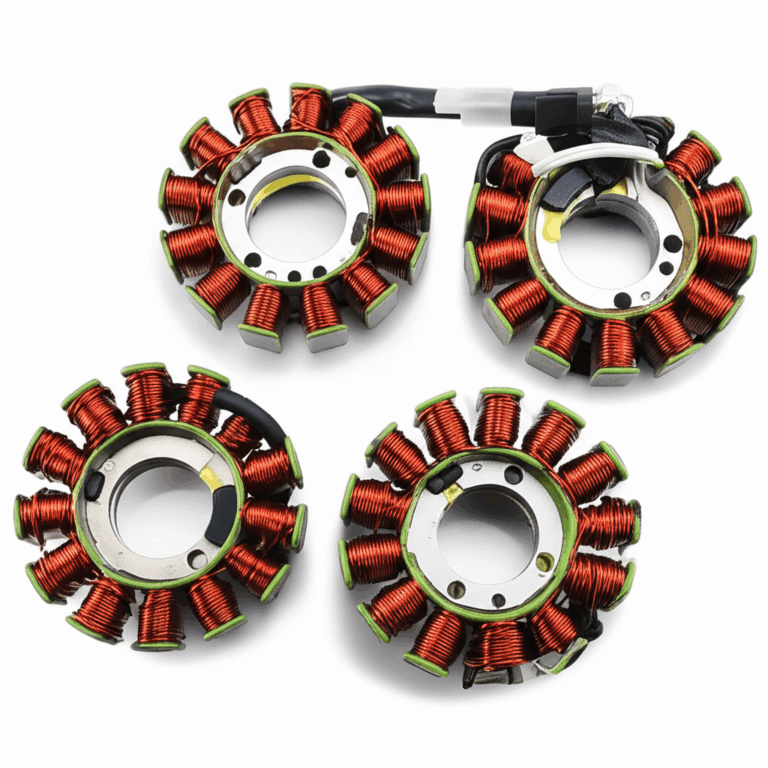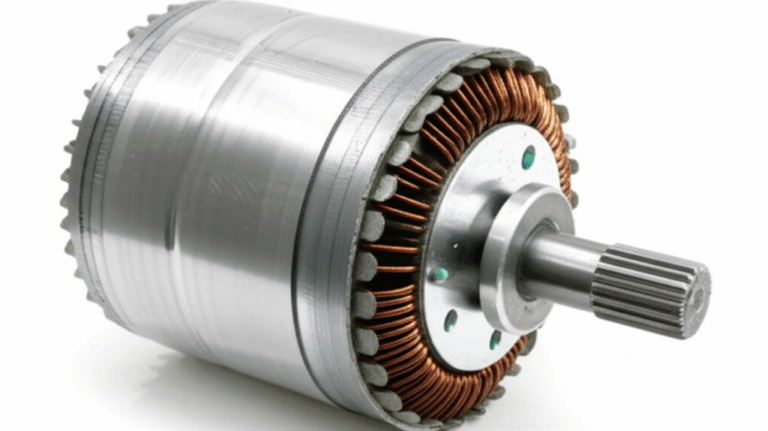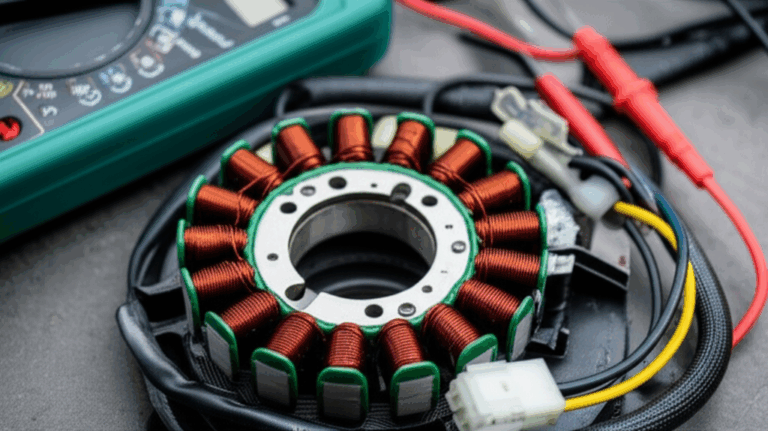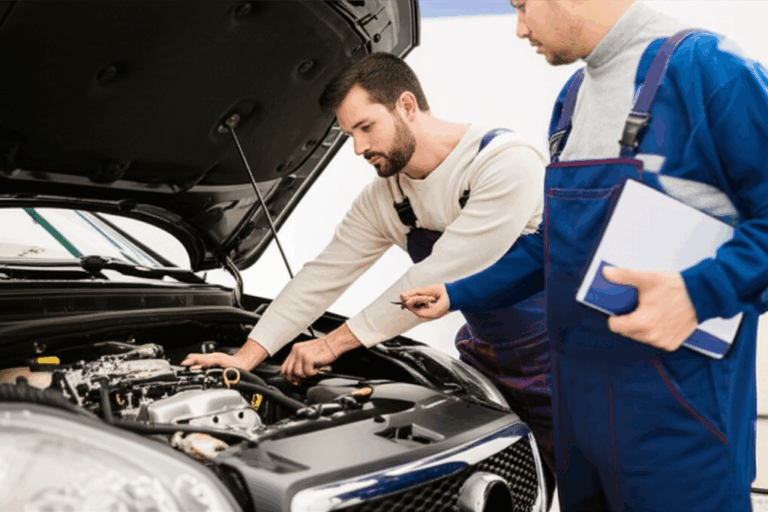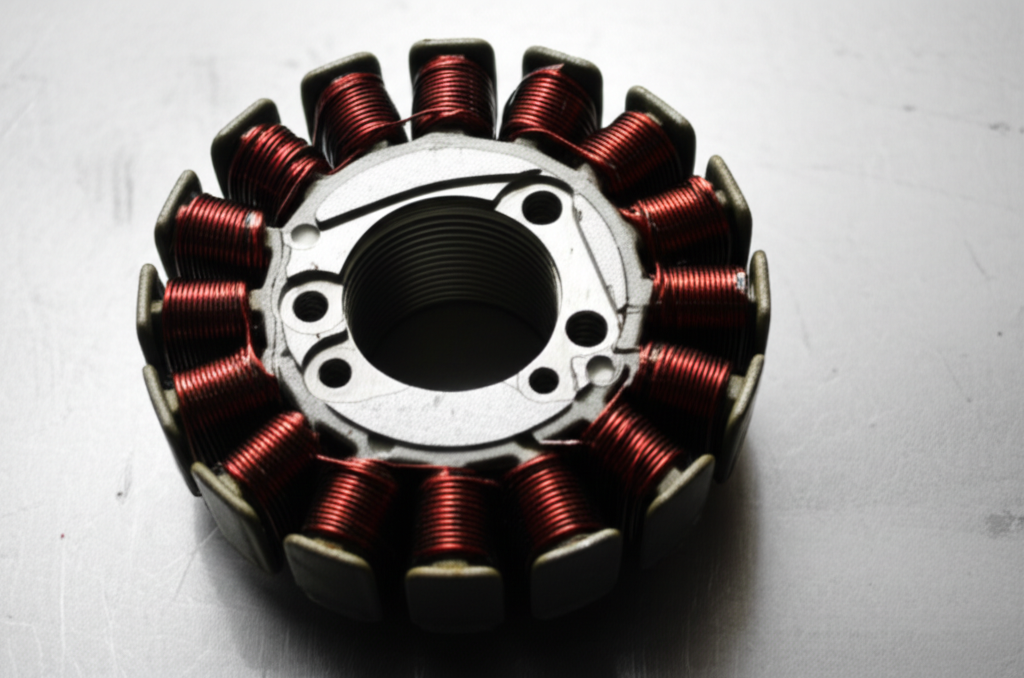
Can a Stator Go Bad From Sitting? What I’ve Seen, How It Happens, and What You Can Do About It
Table of contents
- Direct answer and quick basics
- What a stator actually does in your charging system
- How “sitting” indirectly hurts stators
- Corrosion and oxidation
- Insulation breakdown
- Dust, dirt, and poor heat dissipation
- Rodent damage and wiring harness issues
- Oil contamination and fluid leaks
- Battery stress after storage
- Common stator failure causes beyond sitting
- Symptoms I look for after a vehicle has sat
- How I test a stator with a multimeter (step-by-step)
- Resistance/continuity test
- Ground short test
- AC voltage output test
- Bonus checks: regulator/rectifier and diodes
- Prevention: How I store vehicles to protect the stator
- Storage environment and humidity control
- Battery maintenance and parasitic draw
- Rodent control tips that actually work
- Periodic inspection and occasional running
- Fluids and cooling considerations
- Re-commissioning checklist after long storage
- If your stator is bad: diagnosis, replacement, and costs
- Final thoughts
Direct answer and quick basics
Here’s the short version. Sitting by itself rarely kills a stator. The problem is what happens while a bike, ATV, boat, generator, or car sits. Moisture creeps in. Copper oxidizes. Insulation ages. Rodents chew. Batteries die which loads the charging system hard when you finally fire it back up. Those indirect stressors can push a marginal stator over the edge.
I’ve seen this play out countless times in motorcycles after winter storage, in ATVs that sat a season, and in small generators that lived under a tarp. The stator didn’t “die of boredom.” It died because storage conditions quietly set the trap.
What a stator actually does in your charging system
Before we chase ghosts let’s ground ourselves. The stator is the stationary coil assembly inside your alternator or magneto. The flywheel spins around it with permanent magnets and that spinning magnetic field induces AC voltage in the stator windings. That’s electromagnetic induction in action. The AC output then heads to a rectifier where diodes convert it to DC. The voltage regulator keeps that DC within a safe range so your battery charges and your electronics stay happy.
- In motorcycles and many ATVs you’ll find a three-phase stator and a separate regulator/rectifier.
- In cars the stator lives inside the alternator along with the rectifier and regulator.
- In marine engines and portable generators the setup varies yet the principle is the same: the stator generates AC and the rest of the charging system manages and converts it.
The materials and build quality matter. Good windings, robust insulation, tight clearances, and solid laminations shed heat well and resist breakdown. The steel stack that forms the stator core is made from thin sheets to cut eddy currents and reduce heat. If you want to geek out on the construction side you can explore how stator core lamination design and material choice affect performance along with the role of electrical steel laminations and even complementary parts like rotor core lamination in alternators and generators. The quality of those motor core laminations sets the baseline for efficiency and durability which becomes important once heat and age start taking their toll.
How “sitting” indirectly hurts stators
I’ll walk you through the dominoes that often fall when a bike or boat sits for months.
Corrosion and oxidation
Moisture is the quiet killer. Humid garages, sheds with temperature swings, and outdoor covers all invite condensation. Copper doesn’t rust like steel but it oxidizes which raises resistance and weakens solder joints and terminations. I’ve pulled covers and found greenish windings with dull connections that read open on a meter. The stator sat still yet the environment did not. Humidity above roughly 60% accelerates corrosion and condensation cycles make it worse.
If the stator lives in the engine cavity you still aren’t safe. Warm days and cool nights can breathe moisture past gaskets. Over time it adds up.
Insulation breakdown
The varnish or epoxy on the windings ages. Heat during normal use drives a lot of that aging. Sitting doesn’t heat the windings yet temperature fluctuations still flex the materials. Time does its thing too. After many seasons the insulation can crack or get brittle and when you finally start the engine those vibrations and the renewed magnetic forces find the weak spots. That’s when you get a short between turns or a short to ground.
Dust, dirt, and poor heat dissipation
Dust settles in every nook while a machine sits. You might not think of dust as an electrical problem yet it traps moisture and it insulates surfaces that need to shed heat. I’ve seen stators that ran a bit hot before storage start running a lot hotter after storage because airflow paths got dusty and fins got loaded with grime. The hotter a stator runs the faster the insulation decays which spirals toward failure.
Rodent damage and wiring harness issues
Rodents chew for nesting material and to wear down their ever-growing teeth. They love engine bays and fairings. I’ve fixed more “mystery charging problems after storage” that turned out to be gnawed stator leads or a chewed connector pin than I can count. One Honda came in with a perfect stator on the meter yet zero charge at the battery because a mouse turned the three-phase plug into Swiss cheese.
Oil contamination and fluid leaks
Oil-cooled stators rely on clean oil and proper flow for heat removal. If the bike sits and a seal creeps or a gasket weeps you can end up with oil where it shouldn’t be or old oil that gets acidic. The wrong oil chemistry or contamination can attack insulation. On some marine units coolant can leak into the stator cavity which is even worse. If storage means leaks sit and soak you inched the stator closer to failure.
Battery stress after storage
This one’s common. A deeply discharged battery puts a heavy load on the charging system the moment the engine starts. The stator and regulator work hard to push current back into that battery and they run hotter while doing it. If the stator’s already marginal due to age or corrosion sitting was the quiet shove that tipped it over when you tried to revive a dead battery. You’ll see this in powersports and in cars with alternators too. I’ve watched a brand-new regulator cook because it tried to rescue a battery that was well beyond hope.
Common stator failure causes beyond sitting
It helps to see the big picture so you don’t pin every failure on storage.
- Overheating: The number one direct killer. High current and poor heat shedding cook insulation. Clogged cooling paths and low engine oil accelerate it on oil-cooled systems.
- Voltage regulator/rectifier issues: A failing regulator can overwork the stator or allow overvoltage that stresses windings and diodes. Sometimes the stator damages the regulator. Sometimes the regulator damages the stator. It’s a two-way street.
- Manufacturing defects: Bad insulation, sloppy connections, or poor varnish impregnation show up early in life. These are less about sitting and more about luck of the draw.
- Vibration and physical stress: Loose mounts or poor alignment create rubs and shorts. I once found a flywheel that lightly kissed the windings after a fall which chafed through the enamel.
- Oil contamination: Already covered yet worth repeating. Wrong oil, old oil, or coolant ingress can cause shorts and breakdown.
- Magnet issues: Flywheel magnets rarely “wear out” from sitting though glued magnets can detach or shift if the adhesive fails or if corrosion creeps underneath. Weakening magnets show up as low AC output at all RPMs even with healthy windings.
Symptoms I look for after a vehicle has sat
If your ride sat for months and now acts up here’s what I look for first.
- Charging system issues:
- Battery warning light flickers or stays on
- Battery drains quickly or never seems to charge
- Dim or flickering headlights and dash lights
- Voltage at the battery stays low with the engine running
- Engine performance problems:
- Hard starting or no start unless you jump it
- Misfires, sputtering, or stalling at low RPM
- Sluggish throttle response coupled with low voltage
- Other warning signs:
- A hot or burning smell near the engine cover
- Buzzing or whining that rises with RPM from the alternator area
These symptoms overlap with a bad battery and a weak regulator which is why testing matters. Guessing costs time and money.
How I test a stator with a multimeter (step-by-step)
You don’t need fancy tools. I use a decent multimeter that reads ohms and AC volts. I also follow the exact procedure in the service manual for the specific model because resistance specs and connectors vary.
Safety first. Disconnect the battery when you measure resistance. Keep loose clothing away from spinning parts during the AC output test. If your machine uses oil cooling around the stator then put down a rag to catch drips when you open covers or disconnect grommets.
Most motorcycle and ATV stators are three-phase with three similar colored leads (often yellow). Cars bundle the stator inside the alternator which changes access. Generators and boats vary yet the tests remain similar.
Resistance/continuity test (open circuit stator test)
- Unplug the stator connector from the regulator/rectifier.
- Set your meter to ohms.
- Measure between each pair of stator leads: A-B, B-C, and A-C on a three-phase unit.
- You should see a low and similar resistance on each pair. The exact value depends on the model. If one pair reads drastically different or reads open you’ve got a problem inside the windings.
This checks for open windings and basic balance between phases. It won’t catch every issue yet it finds a lot of them.
Ground short test (continuity to ground)
- Keep the stator unplugged.
- Put one meter lead on any stator wire and the other on a clean engine ground or the stator core/engine case.
- You should read no continuity. If your meter shows continuity or a low resistance to ground the stator is shorted to the core or case which means the insulation has failed.
This is the heartbreaker test because a short to ground almost always means replacement.
AC voltage output test (stator running test)
- Reconnect the battery and start the engine.
- Leave the stator unplugged from the regulator/rectifier so you measure raw AC from the stator.
- Set your meter to AC volts.
- Measure between each pair of stator leads again: A-B, B-C, and A-C.
- At idle you should see a measurable AC voltage. It should climb as RPM rises. The exact numbers vary by model so check your service manual. The key is that all three readings match closely and they rise predictably with RPM.
If one phase lags or stays low you likely have a partial short or a damaged section of winding. If all three are low then check for magnet issues or mechanical problems with the flywheel.
Bonus checks: regulator/rectifier and diodes
If the stator passes the tests then move downstream.
- Measure battery voltage with the engine running. You should see a steady charging voltage within spec for your system.
- Many service manuals include a diode test procedure for the rectifier. You’ll use the meter’s diode mode to confirm that current passes only one way through each leg. A shorted diode cooks stators and regulators fast.
- Inspect connectors for melted plastic, corrosion, or rodent damage. Clean and repair as needed.
One more tip. If you suspect an intermittent problem run the engine and use light heat and vibration around the stator connector and the regulator. Don’t go wild. I use a hair dryer or low heat gun and a plastic tool to tap gently. If output flickers you probably have a failing connection not a bad winding.
Prevention: How I store vehicles to protect the stator
You don’t need a climate-controlled vault. A few simple habits go a long way.
Storage environment and humidity control
- Park in a dry, stable-temperature space if you can. Garages beat sheds. Sheds beat tarps.
- Avoid spots with daily temperature swings that trigger condensation.
- Use a simple dehumidifier or desiccant packs if your area stays humid. It’s amazing how much less corrosion I see when humidity stays in check.
- Keep the machine clean before storage. Dirt traps moisture. Clean metal dries faster and resists corrosion.
Battery maintenance and parasitic draw
- Hook up a smart battery tender or maintainer during storage. It prevents deep discharge which means your stator and regulator won’t face a rescue mission on restart.
- If you store a vehicle without power then disconnect the negative terminal to reduce parasitic draw from ECUs and clocks.
- Test the battery before the first start. Replace a hopeless battery rather than forcing the charging system to beat it back to life.
Rodent control tips that actually work
I’ve tried all the tricks. What works best for me:
- Keep the storage area clean. Food and nesting materials attract pests.
- Use physical barriers and traps near entry points.
- Spray rodent-deterrent on wiring looms before storage. It isn’t perfect yet it helps.
- Seal openings where possible. Foam or mesh around cable pass-throughs can stop critters.
Periodic inspection and occasional running
There’s debate about starting engines during storage. I follow two paths:
- If I can ride or run under load long enough to fully warm the engine and evaporate moisture I do it once a month. Fifteen to twenty minutes at operating temperature plus a short ride keeps the battery charged and the oil circulating.
- If I can’t run it that long I leave it alone and rely on the battery tender. Short starts that never reach temperature add condensation to the crankcase and exhaust which creates more harm than good.
Either way I inspect wiring and connectors monthly. I look for green corrosion, rodent damage, and oil weeps. I also wipe dust from cooling fins and covers so heat can escape when I revive the machine.
Fluids and cooling considerations
- Check engine oil level and condition before storage and before restart especially on bikes where the stator sits in the oil. Old oil can get acidic and that’s rough on insulation.
- Verify cooling system integrity on marine engines and liquid-cooled ATVs. Coolant leaks and saltwater exposure chew up electrics fast.
Re-commissioning checklist after long storage
When I bring a bike, ATV, boat, generator, or car back after months I follow a simple checklist:
- Battery: Charge it. Load test it. Replace if it fails. A strong battery saves your stator and regulator on day one.
- Visuals: Inspect stator connector, regulator connector, and related harness sections for corrosion and chewed insulation.
- Grounds: Clean engine and frame grounds. High resistance grounds create weird charging symptoms.
- Fuses and links: Check the charging system fuse or fusible link.
- Belts and pulleys (cars and generators with alternators): Confirm proper belt tension and no slippage.
- First start: Watch the battery voltage at idle and at 2–3k RPM. Look for smooth rise and stability within spec.
- Smell and sound: Trust your senses. A hot varnish smell or new buzzing near the stator cover is a red flag.
- Secondary checks: If the battery doesn’t charge then do the stator resistance, ground, and AC output tests. Verify the regulator/rectifier as needed.
If your stator is bad: diagnosis, replacement, and costs
When the meter tells the truth and the stator fails you’ve got decisions to make.
- Professional diagnosis: If you aren’t confident with electrical checks then have a qualified mechanic verify your results. It’s cheaper to pay for one hour of diagnosis than to throw parts at a problem.
- OEM vs aftermarket stators: OEM parts usually track the original design and quality. Aftermarket ranges from excellent to questionable. I look for solid insulation systems, quality windings, and good heat shedding. Reputable suppliers publish specs and stand behind their parts.
- Don’t forget the regulator/rectifier: When I replace a failed stator that shows signs of heat damage I evaluate the regulator too. A bad regulator can cook a new stator fast.
- Replacement complexity: On many motorcycles the stator sits behind the left engine cover. You’ll drain oil, pull the cover, and follow the harness to a connector under the seat or side panel. On ATVs access can be tighter. Marine engines and generators vary widely. Cars typically require alternator replacement rather than stator-only work.
- Cost: Parts and labor swing wildly by model and access. The biggest variable is labor time due to access and gasket sealing. Plan for new gaskets and fresh oil if the stator lives inside the engine.
Real-world examples I’ve dealt with
A few quick stories to connect dots:
- The damp shed Honda: A commuter bike sat two years in a humid shed. Dead battery. After a jump the charging light stayed on and the headlight pulsed. The stator read open on one phase and showed corrosion on peeling varnish. A fresh stator and regulator plus a new battery solved it. The root cause wasn’t the sitting alone. The shed’s humidity and a dead battery piled stress on a stator that had aged out.
- The ATV with chewed leads: Parked at a cabin all winter. Ran fine before storage and had zero charge in spring. Resistance checks looked perfect until I wiggled the connector and saw two half-chewed pins. New pigtail harness and dielectric grease fixed it. The stator never failed. The mice did.
- The boat with coolant creep: A small inboard showed flaky charging after layup. AC output from the stator was low on all phases. We found pink residue near the stator cavity and a slow coolant seep. Cleaning, resealing, fresh stator, and a better layup routine ended the drama.
- The “just a battery” motorcycle: Battery tested bad after nine months. Owner insisted on charging it with the bike. The regulator worked too hard and failed which then over-stressed the stator. We replaced all three parts and the owner now uses a maintainer. Painful lesson learned.
A quick detour: alternator vs motorcycle stator vs generator
People ask if sitting hurts car alternators the same way. The mechanisms are similar. Corrosion builds on slip rings and terminals. Bearings can dry. The stator inside the alternator can develop faults for the same reasons as a motorcycle’s stator. The difference is access. You usually swap the entire alternator on a car which packages the stator, rotor, rectifier, and regulator into one unit. On bikes and ATVs you often service the stator separately which makes precise diagnosis more valuable.
Generators and marine engines follow the same physics. Moisture and corrosion do more harm than disuse itself. Winterizing procedures that address electrical connections pay off big.
FAQs I get all the time
- Can a bad battery damage a stator? Indirectly yes. A deeply discharged or failing battery forces the stator and regulator to work harder which raises temperatures. Heat kills insulation. Replace weak batteries promptly.
- How long do stators last? It depends on heat, build quality, and usage. I’ve seen motorcycle stators run strong for many years and I’ve seen poor-quality replacements fail fast. Age alone degrades insulation slowly which is why older machines deserve gentler storage and timely checks.
- Can flywheel magnets weaken from sitting? Not in a meaningful way in most cases. Adhesives can fail and corrosion can displace magnets which looks like weakening. True demagnetization from sitting is rare.
- Dust can really affect a stator? Not by magic. It hampers cooling and holds moisture. Both raise the odds of failure when combined with age and heat.
- Is it worth replacing a stator on an older bike? If you love the bike or the machine fits your needs then yes. Price the stator, the regulator if needed, and your time. Compare that to the value and to a good used machine. Many riders pick OEM electrical parts on older Hondas, Yamahas, Kawasakis, Suzukis, and Harleys because reliability matters once you fix it right.
Putting it all together: a quick checklist for your search intent
If you landed here because your motorcycle won’t charge after sitting or your ATV lights dim at idle or your generator stopped producing:
That process has saved me hours of frustration and a few unnecessary parts orders.
Final thoughts
Can a stator go bad from sitting? Not directly. In my experience sitting sets the stage for the real culprits: moisture, corrosion, insulation aging, rodent damage, and post-storage battery stress. The stator finally fails when you ask it to do heavy work again and the weak links show themselves.
Protect the environment your machine lives in. Keep the battery healthy. Inspect wiring before and after storage. Test before you buy parts. If you do those simple things you’ll avoid most charging system heartaches and you’ll extend the life of your stator, your regulator, and your battery.
And if you like digging into the hardware behind the scenes the materials used in the core matter a lot. High-quality stator core lamination built from efficient electrical steel laminations improve heat and performance which reduces stress on the windings. That same attention to motor core laminations and the matching rotor core lamination is why some machines run cool and charge reliably year after year. The physics doesn’t change and neither do the benefits of good design.
Take care of the basics and your stator will take care of you.

